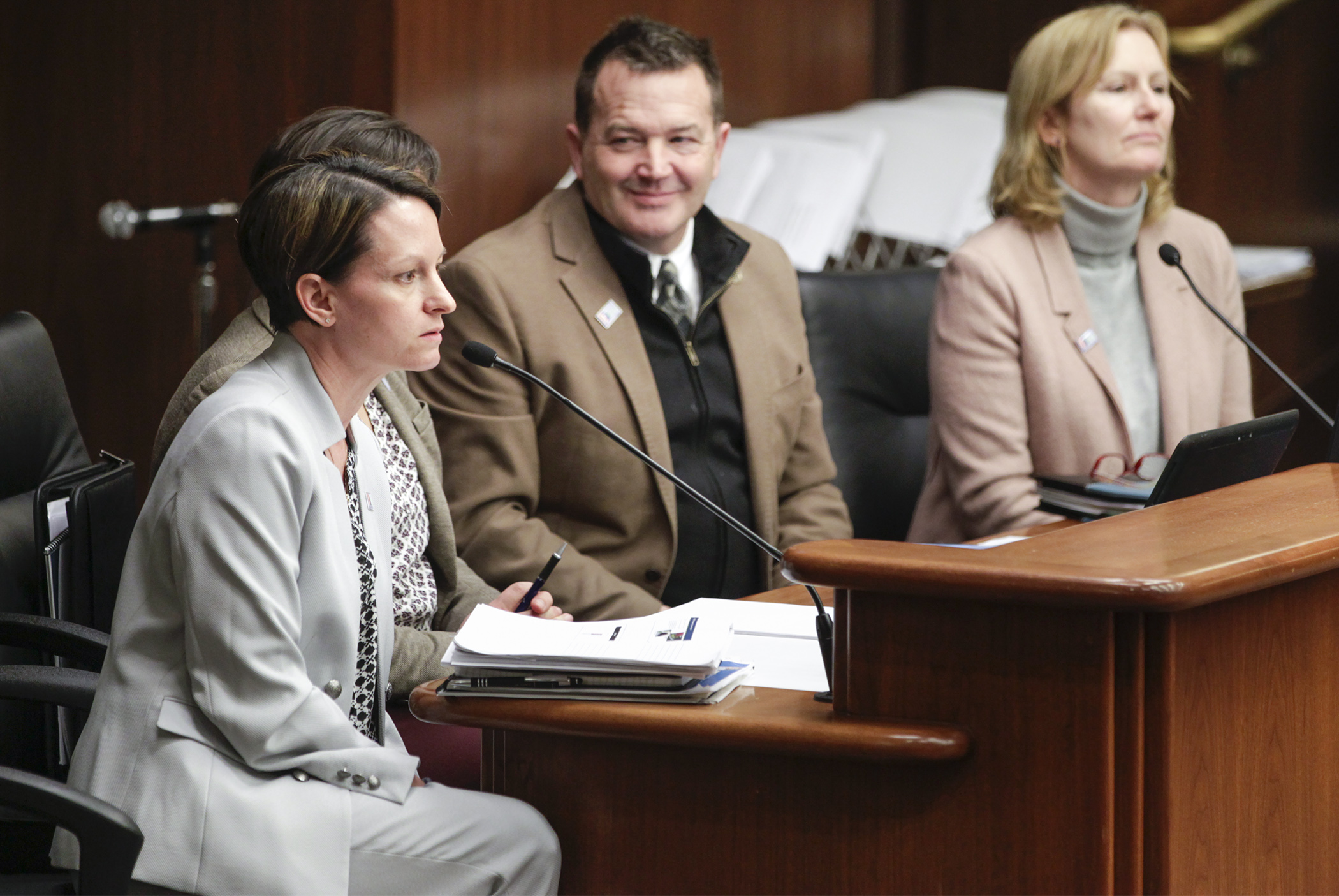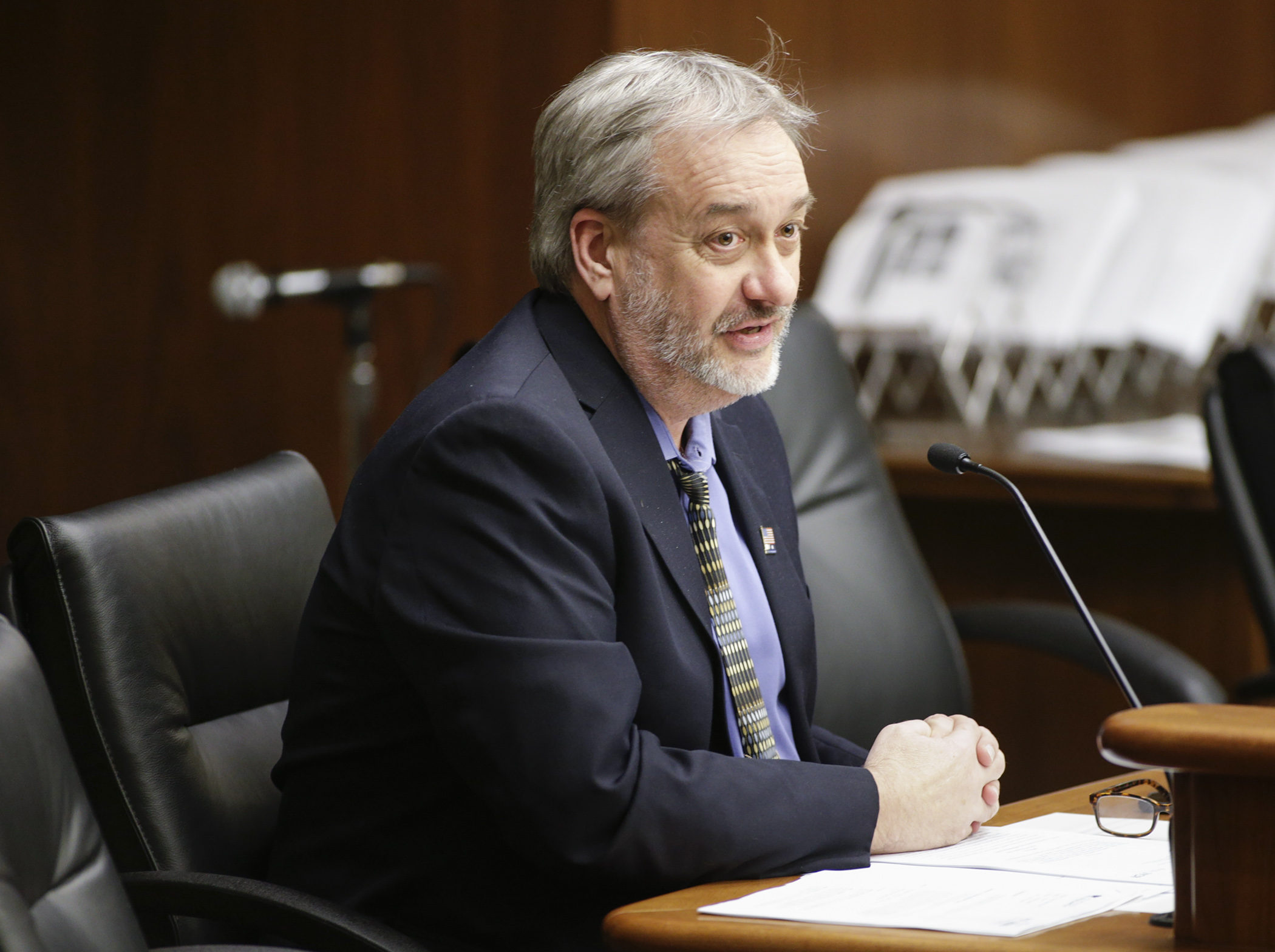What would the Clean Water and Parks and Trails funds fund? House legacy division weighs in

The quest for cleaner water in the state would be enriched by $261.3 million if the House Legacy Finance Division has its way. And the state’s parks and trails would benefit from $102.9 million in funding.
At least that’s what would happen if appropriations remain unchanged from the division’s recommendations.
On Wednesday, the division laid over for possible consideration in the omnibus legacy finance bill HF1928, sponsored by Rep. Rick Hansen (DFL-South St. Paul), which, as amended, would earmark money from the Clean Water Fund. It also laid over HF653, sponsored by Rep. Leon Lillie (DFL-North St. Paul), the appropriations bill for the Parks and Trails Fund.
Those are two of the four funds created by Minnesota’s Legacy Amendment, approved by voters in 2008. It raised the state’s sales tax three-eighths of 1 percent and has since been divvying up that revenue thus: one-third to the Outdoor Heritage Fund for the preservation of prairies, wetlands and forests; one-third to the Clean Water Fund; 19.75 percent for arts and cultural heritage projects; and 14.25 percent for parks and trails.
 Rep. Rick Hansen describes provisions of HF1928 to the House Legacy Finance Division. The bill would appropriate money for water projects and update and modify the state’s Clean Water Legacy Act. Photo by Paul Battaglia
Rep. Rick Hansen describes provisions of HF1928 to the House Legacy Finance Division. The bill would appropriate money for water projects and update and modify the state’s Clean Water Legacy Act. Photo by Paul BattagliaHF1928 would earmark Clean Water Fund monies to nine departments for the 2020-21 biennium. The largest beneficiary would be the Board of Water and Soil Resources, which would receive almost $120 million. The biggest chunks of that funding would go toward surface and drinking water protection and restoration grants, and grants to watersheds with multiyear plans. The second largest appropriation (almost $50 million) would go to the Pollution Control Agency, most of which would go to continue river and lake monitoring to determine pollutant loads, and to watershed restoration and protection strategies.
Other recipients of Clean Water Fund dollars would be the Department of Agriculture ($24.5 million for the biennium), the Department of Natural Resources ($22.2 million), the Department of Health ($19.4 million), the Public Facilities Authority ($18.3 million), the Metropolitan Council ($4.4 million), and the University of Minnesota ($3 million).
The companion, SF2262, sponsored by Sen. Chris Eaton (DFL-Brooklyn Center), awaits action by the Senate Environment and Natural Resources Policy and Legacy Finance Committee.
And for the Parks and Trails Fund …
The $103 million that HF653 would provide from the Parks and Trails Fund for the 2020-21 biennium is a lot simpler to calculate in that the fund is clearly divided into three pots: 40 percent for the Department of Natural Resources, 40 percent to the Metropolitan Council for regional parks and trails, and 20 percent to parks and trails in Greater Minnesota.
So that comes out to $40.7 million for the DNR for state parks, trails and recreation areas, $40.7 million more for the Metropolitan Council, and $20.4 million for parks and trails outside the metro area (the funding administered by the DNR). Another $1 million would go toward collaborations between the partners.
The bill’s companion is SF836, sponsored by Sen. Carrie Ruud (R-Breezy Point). It’s also been referred to the Senate Environment and Natural Resources Policy and Legacy Finance Committee.
Related Articles
Search Session Daily
Advanced Search OptionsPriority Dailies
Ways and Means Committee OKs proposed $512 million supplemental budget on party-line vote
By Mike Cook Meeting more needs or fiscal irresponsibility is one way to sum up the differences among the two parties on a supplemental spending package a year after a $72 billion state budg...
Meeting more needs or fiscal irresponsibility is one way to sum up the differences among the two parties on a supplemental spending package a year after a $72 billion state budg...
Minnesota’s projected budget surplus balloons to $3.7 billion, but fiscal pressure still looms
By Rob Hubbard Just as Minnesota has experienced a warmer winter than usual, so has the state’s budget outlook warmed over the past few months.
On Thursday, Minnesota Management and Budget...
Just as Minnesota has experienced a warmer winter than usual, so has the state’s budget outlook warmed over the past few months.
On Thursday, Minnesota Management and Budget...